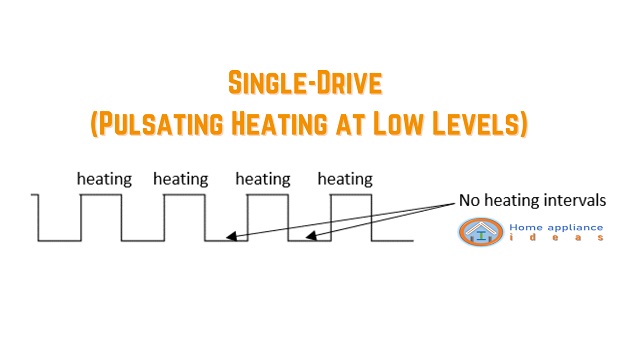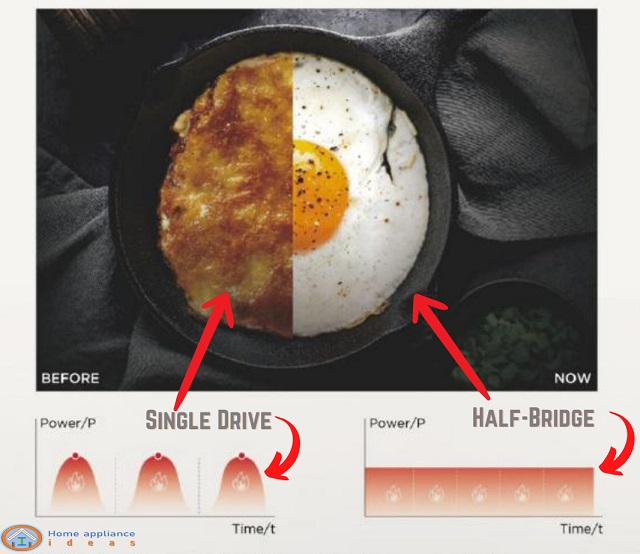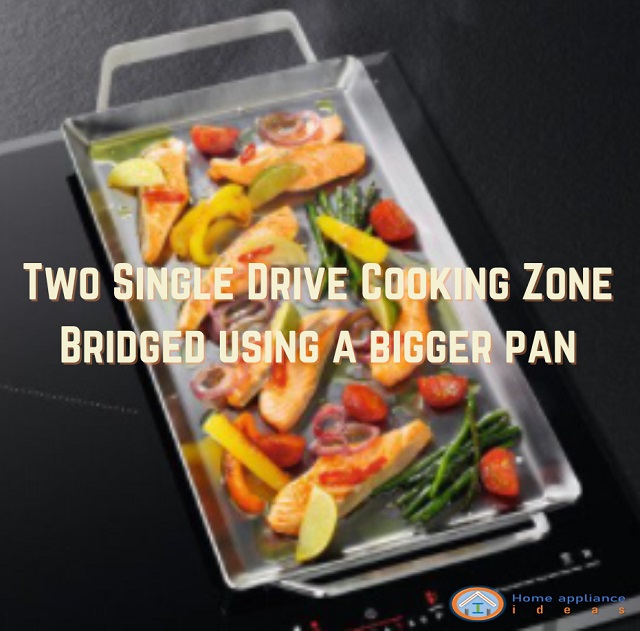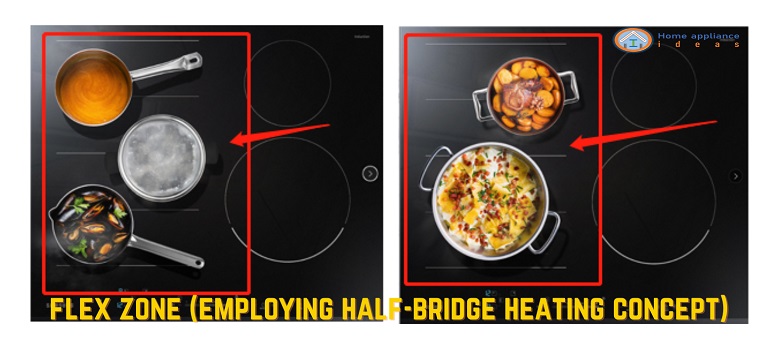Okay, so today, I will talk about induction cooktop technology. We’ll deep dive into some aspects of induction cookers that are often not discussed!
I will guess that you probably already know the principle behind induction hobs or how induction cooker works!
And I’m sure that after reading this article, you’d learn more secrets about induction and its application.
While this subject is more technical — I will try my best to explain this as simple as possible (in layman’s terms)!
So, lets dive in!
Facts About Induction Cooktop Technology
Two concepts of induction heating are being utilized for induction cooktop technology. The first concept is called the Single Drive — this is a design that employs pulsating heating at low power levels, normally at a power below 1000W. The second concept is called the Half Bridge, and this design uses constant heating at all power levels, that includes even the lowest power!
Single-Drive Induction Heating
In a single-drive concept…
The induction cooker generates a “pulsating heating” cycle at low levels —
It basically means that at lower power the induction hob will be switching ON and OFF!
Thus, at low power the heating is not constant (see below illustration).

This happens normally at power levels below 1000W!
If you have used an induction hob, you might have noticed this phenomenon!
One good example is when you use an induction cooker for a hotpot — normally, you will set the induction cooker at lower power to avoid overflow.
Or, during simmering, you will set it to lower power to also prevent overflow!
While at this setting, you will notice it will create bubble (boiling) then shortly after the bubble stops then back again — and the cycle continues until you’re done cooking!
On the other hand,
If the power level is set to a higher rating (normally above 1000W) — the induction cooker will operate to produce constant heating!
Half-Bridge Induction Heating
The half-bridge concept is designed to have “constant heating” in all power levels of an induction cooker!
In simple terms…
Even if you select a power level that is rated as low as 300W, for example, the induction hob will produce constant (power) heat without interval or interruption.

And with the constant heat — it helps prevent overcooking!
Induction coils used for half-bridge designs are different from single-drive heating coils!
The main idea of constant heat, even at low power output, is to ensure better cooking performance.
What Type of Induction Cooktops Are Using Single Drive?
Standard Induction Cooktops
A single-drive design is commonly used in normal induction hobs!
Most old models of induction hobs are using this old concept — employing the single-drive type of design!
When used in an induction cooker with multiple zones — it is normally represented with cooking zones that are marked separately.
And for the induction cooker to work — you must use the correct type and size of cookware and place it in the center!
Or, else, the induction cooker won’t be able to detect that there’s cookware.
Standard induction hobs are cheaper (targeted for general consumers)!
Because these types of induction cookers only have the basic features!
Bridge Zone Induction Cooktops
The term bridge zone mentioned here is the two cooking zone — bridged together using a bigger or longer pan!
So, basically this is also a standard type of induction hob — only it has two or more cooking zones.
Because bridging is only possible if you have a double or multiple cooking zone induction hob!
Normally, used for grilling as illustrated in the below photo!

While the design uses the single-drive concept (pulsating heating at low power levels)…
The two separate cooking zones can be bridged when both coils can detect the cookware that is being used for cooking (as shown in the above example).
What Type of Induction Cooktops Are Using Half-Bridge?
Bridge Zone Induction Cooktops
Similarly, half-bridge can also be utilized on bridge zone type induction cookers!
Before you forget…
I will remind you again that “half-bridge” means constant heating!
Again, bridge zone here means two cooking zones bridged together using bigger or longer pan!
While this combination now contains a half-bridge heating concept.

Again, bridging is only possible for induction cooktops that have two or more cooking zones!
And this type is more expensive than the standard induction hobs.
Flex Zone Induction Cooktops
Flex or Flexi (depending on how different manufacturers call it) — means short for FLEXIBLE!
Applying it to induction cooktops…
Flexible means you can put the cookware in any position, and the cooktop will still be able to detect it and start cooking (as long as it is in the flex zone)!
See below sample illustration.

The principle behind the Flex zone is to eliminate the non-detection of pot/pan when it is misplaced or not at the center of the cooking zone area.
Which makes cooking more convenient!
Flex induction coils can be made up of four or more (small) heating coils each zone!
Whilst employing a half-bridge heating concept on flex induction hobs makes this design even more expensive!
Final Thoughts
I have explained and illustrated some facts about induction cooktop technology!
To summarize…
Induction cooktops employ two heating concepts, they are:
- Single Drive
- A pulsating heating is generated at lower power levels normally below 1000W
- Commonly utilized in standard induction hobs
- It is also possible that a single drive can be used for the Bridge zone
- If the power level selected is a higher rating (above 1000W), constant heating is produced
- A cheaper option but only includes basic features normally
- Half-Bridge
- Constant heating is generated at all power levels
- With the constant (power) heating it can prevent overcooking
- Commonly utilized in Bridge and Flex types of induction hobs
- More expensive option than a single drive
- Utilized normally for premium design
These can be useful when choosing an induction hob.
Besides, it can provide you with more insights about induction cookers.
So, there you have it, folks!
If you have any questions or suggestions, or if you feel some information is lacking…
please leave them in the comments below, and I will answer them as soon as I can and to the best of my knowledge.
Thanks!
